Text

BREAKING: New Jaguar Just Dropped!
A Center for Biological Diversity analysis of a trail camera detection by wildlife enthusiast Jason Miller confirms we have a new jaguar in Arizona, making it the 8th jaguar documented in the U.S. Southwest in the past 3 decades.
The rosette pattern on each jaguar is unique, like a human fingerprint, and it enables identification of specific animals. The pattern shows this jaguar is not Sombra or El Jefe, two jaguars who have roamed Arizona in recent years.
Jaguars once lived throughout the American Southwest, with historical records on the South Rim of the Grand Canyon, the mountains of Southern California and as far east as Louisiana. But they virtually disappeared from this part of their range over the past 150 years, primarily due to habitat loss and historic government predator control programs intended to protect the livestock industry.
Read more: https://biodiv.us/3RORtQp
8K notes
·
View notes
Text
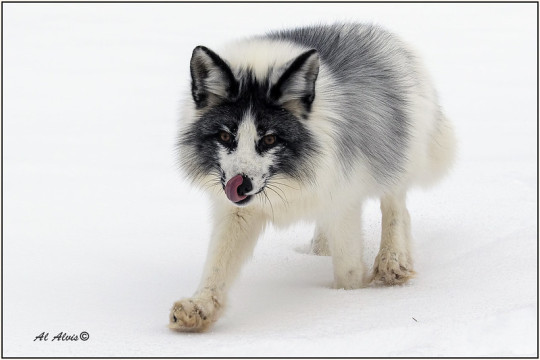
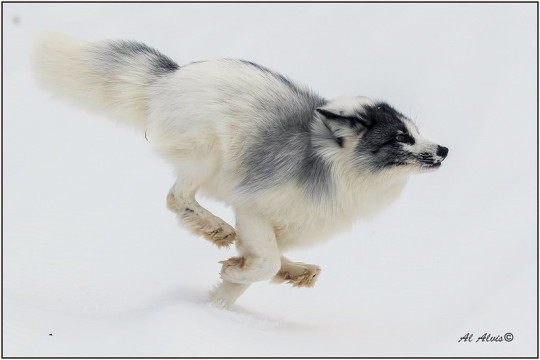
Marble Fox
Photos © Al Alvis
2K notes
·
View notes
Text

Jean Paul Gaultier autumn/winter 2003
#fur fashion#crystal fox#this type of fox is made by bleaching the pelt of a dark silver fox to make it brown#as opposed to amber or burgundy fox which is naturally brown
481 notes
·
View notes
Text
happy tortie appreciation day!
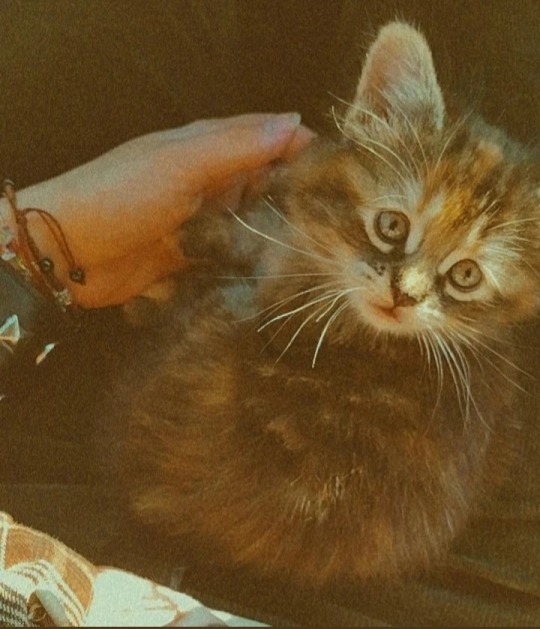
here's my mischievous & sweet tortie when she was little ! :-) she was a bottle fed baby
Apparently it's National Tortie Appreciation Day (April 17). I want to see all your tortoiseshell (and calico) cats!
Here's some random Maggie pics

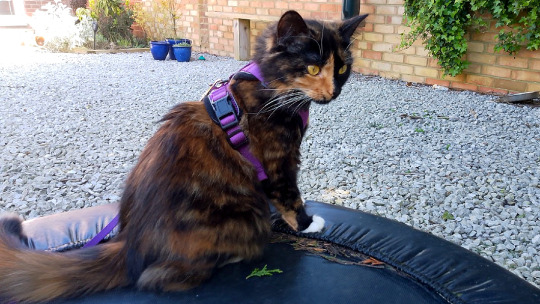

78 notes
·
View notes
Text
a beautiful and rare marble mink! these mink actually get their temperature sensitive pigmentation in the same way as that of a Himalayan mouse.

image credit: Unicorn Fur Farms
5K notes
·
View notes
Text
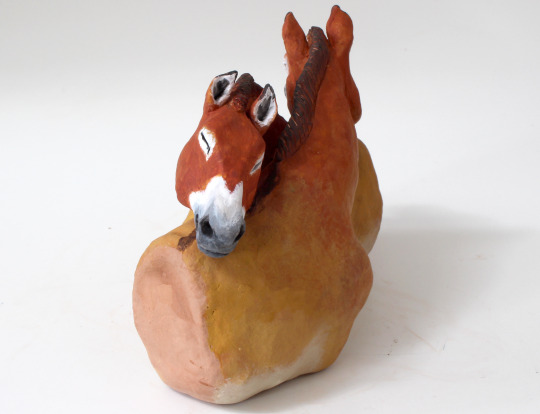




[ID: Photos of a painted clay sculpture of two Przewalski's horses leaning against one another in an embrace with their eyes closed. The sculpture is from the shoulders up. Each photo shows a different angle. End ID]
This was an older Embrace piece that wasn't up to scratch, was going to recycle it, instead reworked the faces and manes, and used it as an opportunity to practice painting with acrylics. One of the faces has the more “plastic” look that I've been trying to avoid with acrylics (lower left photo). Watering the paint down and then gradually layering seems to keep the matte look I was getting with gouache.
Available on my Etsy
3K notes
·
View notes
Photo



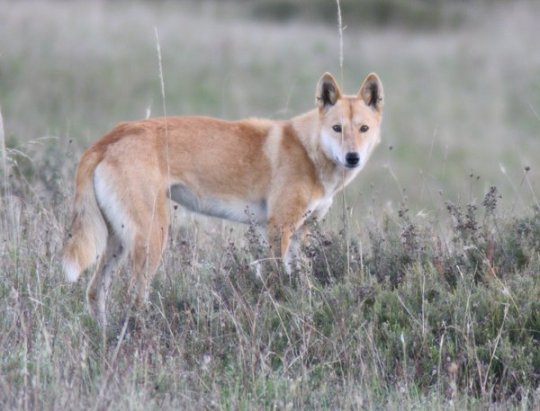
Dingoes are diverse! They don’t all look like the fella in the last photo, but for all intents and purposes, they are all dingoes. These dingoes are being researched in the one area and population, and are closely related (from the same kin group). The variation in colour morphology cannot be the only thing considered when you look at a dingo. These animals have the same genes, the same skull morphology, body structure, behaviour, hunting patterns and live entirely independent of humans. These are not a feral domestic species, they are dingoes - Canis Dingo, not Canis Lupus or Canis Familiaris.
edit: There is a 178 SMITH ET AL. · Zootaxa 4564 (1) © 2019 Magnolia Press “…general perception, both in the scientific literature and the lay public more generally, that dingoes are uniformly yellow (or ginger) with white markings at the extremities. However, while this is often the case, old skins show that other pelage colourations also existed in remote areas in the 19th Century, including animals that were black with brown extremities, animals with dark dorsal fur (sable colouration), and white (Crowther et al. 2014).
Wild dingoes experience natural selection on a wider gene pool, which maintains dominant trait phenotypes and heterozygous genotypes (Parr et al. 2016). Most of the world’s dogs live semi-autonomous mutualistic relationships with humans (Barnett & Rudd 1983; Gompper 2014). In this most common condition, the dog phenotype does share some generic traits with dingoes. However, this phenotype is much more variable than the dingo phenotype — i.e., they can still exhibit flopped ears, spotty/patchy coat — depending on the ancestry of the domestic dog breed. Village dogs in Southeast Asia can share superficial phenotypic similarity to dingoes, but are distinguishable from dingoes on a range of morphological, phenotypic, and genetic variables (Corbett 1985; Gonzalez 2012; Cairns & Wilton 2016).”
5K notes
·
View notes
Text
Chaunacops is a genus of lophiiform fish ( anglerfish )
9K notes
·
View notes
Note
Hey, I have a question about your work if that's ok with you
How did you start working as a furrier? I'm very interested in the topic but can't find much information online
hi there! :-)
i started working as a furrier somewhat recently-- for about 3 years-- before this i was an armature taxidermist and a very casual vintage fur collector. i started making fur hats on a whim and realized i really enjoyed designing + making patterns and sewing the pelts. i was originally self-taught but ended up with some wonderful mentors. i used to sell online but now i'm transitioning into working at a fur shop!
i've always been interested in fur because mammals (particularly foxes) have always been my main special interest and i spent a lot of time as a kid reading articles about genetic mutations found on fur farms. i have a heart condition that makes me susceptible to the cold + i'm allergic to polyester so my grandmother gave me a mink fur hat that gave me an appreciation for fur.i know it sounds odd to most people but i work with fur because i love animals and i love learning new things about them!
becoming a furrier is self-taught at first by trial & error, then getting a mentor who's in the trade, and then finding an in-person fur shop to work at or selling online.
#im SO sorry this is so long#i'm not sure i even really answered your question#furrier is no longer a recognized profession in the u.s. so its difficult to start#but i've found it really rewarding
5 notes
·
View notes
Text
feel like i need to reiterate im pro-fur farm because i personally think fur farms are more ethical than trapping. im very picky on what fur farms i support
it's alright to be anti-fur farm, but as someone who works with fur i think it's easier to trace farmer fur and ensure it's ethical
6 notes
·
View notes
Text
hey there, op (me) is a professional furrier (i make fur coats for a living) & many of the people who reblogged from me or people in my circle are aware of this fact (or are reblogging because they're interested in mink genetics, which is the reason i started working with fur). i post fairly often on the ethics of fur farming & the care these animal's receive.
Unicorn Farms does a great job providing care for their animals-- posting a mink is similar to posting any other livestock. we can appreciate our multifaceted relationships with animals. mink farming is illegal in some places, but i live in an area that produces some of the most sought after minks + i've personally toured fur farms.
saying you want to personally 'cull' a whole farm and the people who work there is incredibly inappropriate and strange. hope you'll understand that.
a beautiful and rare marbled mink! these mink actually get their temperature sensitive pigmentation in the same way as that of a Himalayan mouse.

#i was mutuals with this person- im not sure how they followed me for over a year without realizing i work with fur??#im not shy about it#anyways this blog is pro-fur farming and anti-pet mink#pet mink are absolutely unethical#i consider fur an essential product and an ethical piece of art#fur is not vanity. fur is an ethical & sustainable material i think all people should have access to
5K notes
·
View notes
Text
youtube
Dutch wolf in National Park Hoge Veluwe crawls through badger tunnel
This wildlife camera shows footage of a wolf on the Southwest Veluwe crawling through a badger tunnel with a diameter of 30 centimeters. It once again demonstrates that the wolf only needs a small hole to pass through a fence.
This fence is designed to deter wild boars and therefore not intended to stop wolves, but it does offer new insights into the inventive behavior of the wolf.
530 notes
·
View notes
Note
so, about the black crystal (homozygous) american mink, I've read that it has the COPA genes and can be somewhat similar between hedlund white or the himalayan coat demonstrated in the marbled one


the question is, does the C^r/C^r mink is a temperature sensitive as well?
Yes! I believe so! At least from what I've read it seems like both the minks have a similar gene to the Siamese cat which is also temperature sensitive.
If anyone has any information on this please sound off! I'm really fascinated by mink genetics.
5 notes
·
View notes
Text
as a huge lover of birds, 90% of the concern against wind turbines being used for energy is literally just pro fossil fuel propaganda. birds ARE at a risk however there is a lot of strategies even as simple as painting one of the blades that reduces a lot of accidental deaths. additionally renewable energy sources will do more in favor of the environment that would positively impact birds (and all of us). one study found over one million bird deaths from wind turbines. while that is a shockingly high number and we should work to drastically shrink it, at least 1.3 billion birds die to outdoor cats on a yearly basis. it was never about caring about birds
78K notes
·
View notes

